#the vicomte of bragelonne: ten years later
Text

...she was charming when she laughed, beautiful when she became serious; but, let us hasten to say, she was more frequently charming than beautiful.
aure de montalais, the vicomte of bragelonne by alexandre dumas.
#aure de montalais#the vicomte of bragelonne#the vicomte of bragelonne: ten years later#le vicomte de bragelonne#the three musketeers#les trois mousquetaires#alexandre dumas#montalais#my stuff#is there any tag for the d'artagnan romances edits that is not for bbc musketeers specifically?#don't wanna clutter that tag with the characters that aren't in the show#anyway reading angélique book 3 reminded me of tvob because the timelines coincide and got me thinking of this girl#specifically of whether there would've been girlboss/girlboss hostility if angélique and montalais met#not necessarily i think considering angélique was nothing but kind to louise#and i think montalais despite all her scheming actually loved louise. y'know in the same manner in which aramis actually loved porthos
13 notes
·
View notes
Text

Alexandre Dumas (July 24, 1802 – December 5, 1870) known as Alexandre Dumas père, was a French writer. His works have been translated into many languages, and he is one of the most widely-read French authors. Many of his historical novels of high adventure were originally published as serials, including The Count of Monte Cristo, The Three Musketeers, Twenty Years After, and The Vicomte of Bragelonne: Ten Years Later. His novels have been adapted since the early twentieth century for nearly 200 films. His last novel, The Knight of Sainte-Hermine, unfinished at his death, was completed by scholar Claude Schopp and published in 2005. It was published in English in 2008 as The Last Cavalier.
He was born in Picardy, France. He had two older sisters. Their parents were Marie-Louise Élisabeth Labouret and Thomas-Alexandre Dumas.
Prolific in several genres, he began his career by writing plays, which were successfully produced from the first. He wrote numerous magazine articles and travel books; his published works totaled 100,000 pages. He founded the Théâtre Historique in Paris.
The English playwright Watts Phillips, who knew him in his later life, described him as “the most generous, large-hearted being in the world. He was the most delightfully amusing and egotistical creature on the face of the earth. His tongue was like a windmill – once set in motion, you never knew when he would stop, especially if the theme was himself.”
He married actress Ida Ferrier (born Marguerite-Joséphine Ferrand) (1840). They did not have any children together. He is known to have fathered at least four children. #africanhistory365 #africanexcellence
6 notes
·
View notes
Text

“That's it, all the topics have been covered. It's four in the afternoon, night has fallen, you can hear the hum of the refrigerator. He looks at his rings, strokes his musketeer's goatee: it's no longer Dumas's Twenty Years After but The Vicomte of Bragelonne: Ten Years Later. I've asked all my questions and it doesn't occur to him to ask me any: How do I live, am I married, do I have children? Do I prefer a warm climate or a cold one? Stendhal or Flaubert? Plain or fruit yogurt? What type of books do I write, since I'm a writer? He says it's part of his mission in life to show an interest in other people, and no doubt he'd be interested in me if he met me in prison, guilty of a beautiful, bloody crime, but that's not how it is. The fact is that I'm his biographer: I ask him questions, he answers, and when he's finished answering he says nothing, looks at his rings, waits for the next question. I think to myself that there's no way I can spend several hours on an interview like this, I'll get along fine with what I've got. I get up and thank him for the coffee and his time. It's right on the doorstep that he finally does ask me a question: "It’s strange, you know. Why do you want to write a book about me?"
I'm taken aback but I answer, sincerely. Because he's living—or he lived, I don't remember what tense I used—a fascinating life. A romantic, dangerous life, a life that dared to engage directly with history.
And then he says something that cuts me to the quick. With his dry little laugh, without looking at me: "Yeah, a shitty life."” - Emmanuel Carrère, ‘Limonov: The Outrageous Adventures of the Radical Soviet Poet Who Became a Bum in New York, a Sensation in France, and a Political Antihero in Russia’ (2011) [p. 337]
#limonov#eduard limonov#eddie baby#Carrère#emmanuel carrère#life#books#bookshelf#library#national Bolshevism#russia#punk#new york#russian literature#russian
4 notes
·
View notes
Text
So I’ve been LOVING the new english translations of The d’Artagnan Romances (Three Musketeers, Twenty Years After, Le Vicomte de Bragelonne) and while waiting for his edition of the next book in the Ten Years Later chunk I found out that he is releasing the chapters serially online RIGHT NOW!
https://musketeerscycle.substack.com/p/court-of-daggers
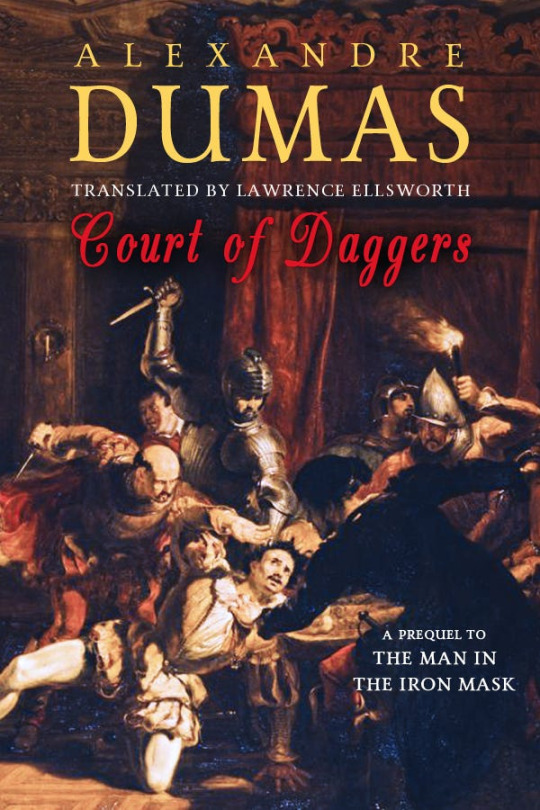
Like you can be actively reading the story as a weekly serial the way it was originally published!!! This is such a cool flippin thing for them to be doing and I’m even more hyped than I already was!
#the three musketeers#Twenty Years After#L3M#D'Artagnan#d'artagnan romance#You mean along with looking forward to new releases from my favorite author#I get to read them in the same fashion they were originally published?!#wieshfsaeiuhwfowr#alexandre dumas#dumas
55 notes
·
View notes
Note
so i haven't yet read Roman Holiday, but i was wondering what your thoughts were regarding it and Neo's fairy tale allusion? I'm not sure if its something the book gets into, i just know that so far in the show it's been kinda vague and subject to some fan speculation. I saw one of your posts mentioning an allusion to gollum/smeagol, which would be cool, but do you think that's intentional, or more incidental? and if incidental, what her 'actual' allusion might be?
I'll admit, I didn't pick up on a whole lot of potential allusions for Neo in Roman Holiday. I do think Neo's main allusion is still going to be Gollum/Smeagol. It's been well documented by now that RWBY loves its Lord of the Rings allusions, and Neo/Trivia is fairly perfectly positioned to be a fairly interesting take on the Gollum/Smeagol dynamic. So yeah, I think the potential references are very intentional on CRWBY's part.
Also, if CRWBY do actually go for giving Ruby the Odin allusions I've discussed in previous posts, then Neo would make an ideal allusion to Loki to go along with Ruby's Odin, for fairly obvious reasons (Note: Unlike what Marvel would have you believe, in Norse myth Loki is sworn/blood brothers to Odin, not Thor)
That being said, there is one detail from Roman Holiday that I do think gives Neo an allusion I do find particularly interesting. Early on in the novel, there is a brief appearance by a 'Doctor Mazarin', who diagnosis Trivia's mutism. Now, Cardinal Jules Mazarin was a major character in Alexandre Dumas' novel The Vicomte of Bragelonne: Ten Years Later (a sequel to The Three Musketeers), likely better known for its most well-known character: The Man in the Iron Mask. A secret twin-brother to the king who has been imprisoned his entire life and forced to wear an iron mask to prevent anyone from finding out who he really is.
Which I'd say fits Neo's/Trivia's situation surprisingly well. Neo once represented all of things Trivia tried to lock away, and now most likely Trivia represents everything Neo is trying to lock away.
#rwby#anon ask#rwby ask#rwby analysis#Neopolitan#Trivia Vanille#i imagine others have noticed plenty of other possible allusions I missed
25 notes
·
View notes
Text
So anyway, I don't think Trivia Vanille is Neopolitan.
I think the Neo we see in the first chapter is, in fact, actually Neo, and has Trivia's parents convinced she's an imaginary friend.
While reading the chapter, I started thinking it was possible the "imaginary Neo" was real, but the thing that sealed it for me?
Trivia's parents mention a Doctor Mazarin.
Cardinal Jules Mazarin was first minister to Kings Louis XII and XIV of France. He succeeded the infamous Cardinal Richlieu of Three Musketeers fame. And in a sequel to The Three Musketeers, a book called The Vicomte of Bragelonne: Ten Years Later, there is a certain story about Louis XIV.
Regarding the legendary Man in the Iron Mask.
A secret identical twin brother of Louis XIV, imprisoned and forced to wear an iron mask to conceal his identity.
100 notes
·
View notes
Text
Whaddup my fellow Musketeers, if y’all be needing some Comedy Material™ I’d suggest you check out my Humble, Satirical And Subtly Hilarious Review of Louise de la Vallière aka the second book in The Vicomte de Bragelonne: Ten Years Later saga.
Watch out for spoilers though.
I’m tagging @incorrect-musketeers for the sake of spreading The Comedy™ but also because they’re a top-notch Musketeers blog imho
25 notes
·
View notes
Text
"THE MAN IN THE IRON MASK" (1977) Review

"THE MAN IN THE IRON MASK" (1977) Review
I have seen my share of movie and television productions that are based on novels and plays by Alexandre Dumas père and his son Alexandre Dumas fils And for some reason, I never get tired of watching them - over and over again. And one of them is the 1977 television movie, "THE MAN IN THE IRON MASK".
Directed by Mike Newell and adapted by William Bast, "THE MAN IN THE IRON MASK" is loosely based on Alexandre Dumas père's 1847-50 novel, "The Vicomte of Bragelonne: Ten Years Later". The novel was the third and last of the author's "The d'Artagnan Romances" literary trilogy, following "The Three Musketeers" and "Twenty Years After". The movie begins with Philippe Bourbon being snatched by a group of mysterious men from his small French estate and imprisoned at the Bastille. It turns out that the men behind this kidnapping is King Louis XIV's finance minister, Jean-Baptiste Colbert and the head of the Musketeers, D'Artagnan.
Aware that Philippe is the twin brother of the king (and the rightful monarch of France), the pair plan to conduct a bloodless coup to eventually switch Philippe with the corrupt and malicious Louis. However, their plans are stymied when the Chevalier Duval, an aide of the also corrupt Superintendent of Finances Nicolas Fouquet, stumbles across Philippe. Fouquet, via instructions from Louis, orders Duval to take Philippe from the Bastille and install him in another prison on the coast. Fortunately for Colbert and D'Artagnan, they learn of Philippe's fate from Louis' reluctant and disenchanted mistress Louise de La Vallière and plot to rescue the royal twin and continue with their plot to replace him with Louis.
When I saw "THE MAN IN THE IRON MASK" for the first time, I thought it was perfect. Flawless. And it became one of my favorite Alexandre Dumas adaptations and television movies for years. After my recent viewing of the television movie, I now realize that it is not perfect. I feel that screenwriter William Bast had changed one aspect of Dumas' novel, "The Vicomte of Bragelonne: Ten Years Later", that had an impact on the 1977 movie's narrative. The novel had portrayed Louis as the older twin and rightful king of France. For some reason, Bast had made Philippe the oldest twin. Why? I have no idea. To justify Philippe's theft of the French throne? Unfortunately, this narrative change left me wondering why Philippe, as the "older twin" was not allowed to be his father's heir and later, successor. In one scene, Colbert explained that former French minister and lover of the twins' mother Queen Anne, Cardinal Mazarin, had Philippe taken away following the latter's birth, in order to manipulate then King Louis XIII. This explanation struck me as lame and confusing. And Bast should have never changed this aspect of Dumas' plot.
Many moviegoers have become increasingly critical of any production that have not closely adhere to its literary source over the years. I have no idea how many of them felt about this 1977 television movie. But I have a pretty good idea how I feel about it. Although I found the major change mentioned in the above paragraph troubling, I had no problems with many of other Bast's changes. I have read Dumas' novel. It was interesting . . . to say the least. I have no problems reading or watching a story with a downbeat ending if it suits the narrative or if I am in the mood to embrace it. I have never been in the mood to embrace Dumas' 1847-50 novel. Which would probably explain why I enjoyed the changes in this adaptation a lot. But wait . . . extreme changes had been made in other adaptations of "The Vicomte de Bragelonne". What was it about this particular adaptation that I enjoyed? I found it better written than the other adaptations.
For me, "THE MAN IN THE IRON MASK" was a tight and well-written story that did not drag or rush the movie's narrative. Which is more than I can say for Dumas' story. Most Dumas' adaptations tend to be part-dramas/part-swashbucklers. "THE MAN IN THE IRON MASK" - at least this version - seemed to be eighty-five percent drama and fifteen percent action. In fact, the only real action sequence in this production turned out to be D'Artagnan's rescue of Philippe from the coastal prison. And if I must be honest, I thought Mike Newell's direction, Freddie Young's cinematography and Bill Blunden's editing made that sequence a tense, yet exciting affair.
However, the meat of "THE MAN IN THE IRON MASK" centered around its dramatic scenes. Thanks to Newell's direction, Bast's screenplay and a talented cast, the television movie featured some very memorable scenes. Among my favorites are Philippe's discovery that he is the King of France's twin brother, Louis' malicious reaction to his failure to impress Louise de La Vallière, a tense conversation between Philippe and Queen Marie-Therese, and the last verbal duel between Colbert and Fouquet. If I had to select my absolute favorite scene, it had to be the one that featured Louis' "Sun King" ballet, Louise's failure to be impressed and Louis' malicious act of using the Queen as a scapegoat for his embarrassment.
As I had earlier stated, the dramatic scenes in "THE MAN IN THE IRON MASK" would have never been fully satisfying to me without its top notch cast. Yes, there were solid performances from the likes of Denis Lawson, Hugh Fraser and Brenda Bruce. But I found myself impressed by other members of the cast. They include Vivien Merchant, who did an excellent job in conveying Queen Marie-Therese's mixed emotions toward her emotionally abusive spouse - whether it was desire, resentment or a combination of both. Ian Holm was excellent as Minister Fouchet's aide, the Chevalier Duval, who seemed to be brimming with cunning intelligence and stealth. I would never associate Louis Jordan portraying a swashbuckling figure. But I must admit that he made an excellent man-of-action in his portrayal of the experienced, competent and quick-thinking D'Artagnan.
Jenny Agutter gave a sublime and passionate performance as Louise de La Vallière, Louis' reluctant mistress who ended up falling in love with the latter's twin. Ralph Richardson's portrayal of France's finance minister Jean-Baptiste Colbert struck me as one of the more entertaining performances in the production. I found Richardson's Colbert cunning, intelligent, patient and more importantly - at least to me - witty. I have seen Patrick McGoohan in several heroic and villainous roles. But I must admit that his Nicolas Fouquet struck me as one of the most subtlety portrayed villains I have ever seen on screen. McGoohan's Fouquet could put Sheev Palpatine from the STAR WARS saga when it comes to subtle villainy. And I like subtle villains. I find them more dangerous.
If I had to give an award for the best performance in "THE MAN IN THE IRON MASK", I would give it to its leading man, Richard Chamberlain. Mind you, Chamberlain had to portray two characters - the decent, yet slightly hot-headed Philippe Bourbon; and the vain and egotistic King Louis XIV. Mind you, I thought Chamberlain did an excellent job of conveying Philippe's sense of confusion, anger and passion. But the actor's portrayal of Louis literally knocked my socks off. Chamberlain's performance was not over-the-top. He did a subtle job of conveying Louis' villainy. And yet, he managed to inject a great deal of - how can I put it - joie de vivre quality in his performance that I found truly entertaining. There was no doubt that Chamberlain's Louis was a villain. But his Louis proved to be one of the most entertaining villains I have seen on screen.
I realize that I have yet to discuss the television movie's production values. We are talking about the 1970s. Although I can recall a good number of television miniseries with first-rate production values, I cannot say the same about several period television productions from both sides of the Atlantic. And "THE MAN IN THE IRON MASK" is a television movie with a 100 minutes running time. However, I thought its production values were first-rate. Despite being a made-for-TV movie, "THE MAN IN THE IRON MASK" was shot on several locations in both France and Great Britain. Thankfully, Freddie Young's photography did an excellent job in enhancing those locations. John Stoll took advantage of those locations and skillfully re-created France and Louis XIV's court of the late 1660s or early 1670s. I am not an expert of 17th century fashion - in France or anywhere else. I have no idea whether Olga Lehmann's costume designs or Betty Glasow's hairstyle are historically accurate. But I cannot deny that I found the hairstyles satisfying and Lehman's costumes beautiful, as shown below:


In the end, I am happy to state that "THE MAN IN THE IRON MASK" remains one of my all time favorite adaptations of an Alexandre Dumas père novel. Despite my quibble of one of William Bast's changes in Dumas' story, I feel more than satisfied with his other changes and thought he had presented a first-rate story. And my satisfaction also extends to Mike Newell's top-notch direction and the excellent performances from a cast led by the always superb Richard Chamberlain.

#the man in the iron mask#the man in the iron mask 1977#the vicomte de bragelonne#Alexandre Dumas#mike newell#louis xiv#richard chamberlain#jenny agutter#ralph richardson#patrick mcgoohan#louis jordan#ian holm#denis lawson#hugh fraser#brenda bruce#vivien merchant#william bast#period drama#period dramas#costume drama
9 notes
·
View notes
Photo







Arrivals & Departures
24 July 1802 – 05 December 1870
Dumas Davy de la Pailleterie [Alexandre Dumas père]
Alexandre Dumas (UK: /ˈdjuːmɑː, dʊˈmɑː/, US: /duːˈmɑː/; French: [alɛksɑ̃dʁ dyma]; born Dumas Davy de la Pailleterie [dyma davi də la pajətʁi]; 24 July 1802 – 05 December 1870), also known as Alexandre Dumas père (French for 'father'), was a French writer. His works have been translated into many languages, and he is one of the most widely read French authors. Many of his historical novels of high adventure were originally published as serials, including The Count of Monte Cristo, The Three Musketeers, Twenty Years After, and The Vicomte of Bragelonne: Ten Years Later. His novels have been adapted since the early twentieth century into nearly 200 films.
Prolific in several genres, Dumas began his career by writing plays, which were successfully produced from the first. He also wrote numerous magazine articles and travel books; his published works totalled 100,000 pages. In the 1840′s, Dumas founded the Théâtre Historique in Paris.
His father, General Thomas-Alexandre Dumas Davy de la Pailleterie, was born in the French colony of Saint-Domingue (present-day Haiti) to Alexandre Antoine Davy de la Pailleterie, a French nobleman, and Marie-Cessette Dumas, a black slave. At age 14, Thomas-Alexandre was taken by his father to France, where he was educated in a military academy and entered the military for what became an illustrious career.
Dumas's father's aristocratic rank helped young Alexandre acquire work with Louis-Philippe, Duke of Orléans, then as a writer, finding early success. Decades later, after the election of Louis-Napoléon Bonaparte in 1851, Dumas fell from favour and left France for Belgium, where he stayed for several years, then moved to Russia for a few years before going to Italy. In 1861, he founded and published the newspaper L'Indépendent, which supported Italian unification, before returning to Paris in 1864.
Though married, in the tradition of Frenchmen of higher social class, Dumas had numerous affairs (allegedly as many as forty). In his lifetime, he was known to have at least four illegitimate children, although twentieth-century scholars found that Dumas fathered three other children out of wedlock. He acknowledged and assisted his son, Alexandre Dumas, to become a successful novelist and playwright. They are known as Alexandre Dumas père ('father') and Alexandre Dumas fils ('son'). Among his affairs, in 1866, Dumas had one with Adah Isaacs Menken, an American actress then less than half his age and at the height of her career.
The English playwright Watts Phillips, who knew Dumas in his later life, described him as "the most generous, large-hearted being in the world. He also was the most delightfully amusing and egotistical creature on the face of the earth. His tongue was like a windmill – once set in motion, you never knew when he would stop, especially if the theme was himself."
3 notes
·
View notes
Text

from Volume II of The Vicomte of Bragelonne: Ten Years Later by Alexandre Dumas, illustrated by M. Sagymbayev and V. Shepilov, 1992
#the vicomte of bragelonne#the vicomte of bragelonne: ten years later#le vicomte de bragelonne#le vicomte de bragelonne ou dix ans après#alexandre dumas#raoul de bragelonne#louise de la vallière#aure de montalais#my stuff#my new nefarious plan is using the company scanner to scan pretty illustrations from old books i own and sharing them here
5 notes
·
View notes
Link
A French writer. His works have been translated into many languages, and he is one of the most widely read French authors. Many of his historical novels of high adventure were originally published as serials, including The Count of Monte Cristo, The Three Musketeers, Twenty Years After, and The Vicomte of Bragelonne: Ten Years Later. His novels have been adapted since the early twentieth century into nearly 200 films.
Prolific in several genres, Dumas began his career by writing plays, which were successfully produced from the first. He also wrote numerous magazine articles and travel books; his published works totalled 100,000 pages. In the 1840s, Dumas founded the Théâtre Historique in Paris.
His father, General Thomas-Alexandre Dumas Davy de la Pailleterie, was born in the French colony of Saint-Domingue (present-day Haiti) to Alexandre Antoine Davy de la Pailleterie, a French nobleman, and Marie-Cessette Dumas, an enslaved woman of African descent. At age 14, Thomas-Alexandre was taken by his father to France, where he was educated in a military academy and entered the military for what became an illustrious career.
1 note
·
View note
Text
Kamo Gradeshi
--- to Lois the XIV and the French Enlightenment
(and to Wordsworth and to Dumas)
The dawn of time in all its shapes
has come to see if we are even;
if we can take the only pledge
to find renounced truth be given.
we want to see you
we want you to come
we want you to be one
we want you to come
we want you
we need you
we see you
are you the one?
She dwelt among the untrodden ways,
Upon the unfairly realms.
We tweet of the only gods
who seek us to be unchanged.
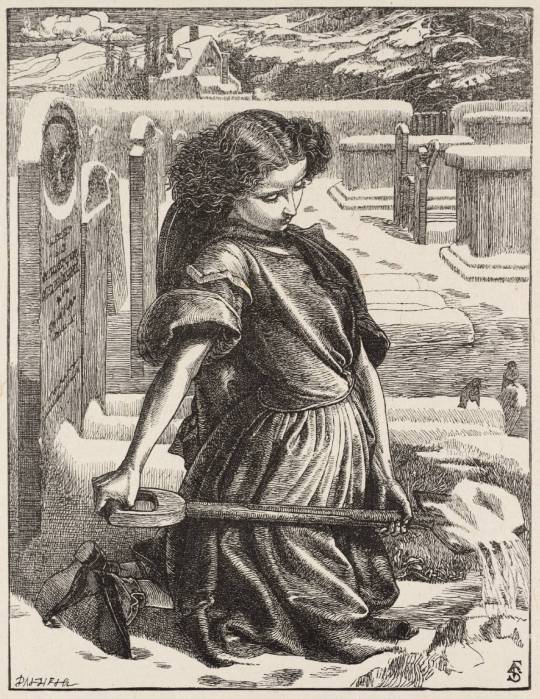
Kamo gradeshi [1], who will you be,
where do you find the holy to be?
Will you be us?
Or will us to be you?
where do we find ‘the’ and ‘only’ truth do?
She says she knows the time,
she says she knows the people;
she knows the only stone
that has carvings of a spear-dom.
I want to invent the way.
I want to pronounce truth.
I want to evade the scheme
and avoid what the truth is doing.
she is broken
she is unfair
she is an old-hex
she is our undoing
she can only look at the core
of the infinite and the unstopping.
Miss Louise de La Vallière [2]
broke the sacred pledge of valor,
as she knew what made the stars
blend-in under the sun of honors.
I don’t pity her
nor I do blame
her betrayal of the innocent.
I can only feel her shame,
as her plain legs
sought no fame.

[1] Kamo Gradeshi. “Quo Vadis: A Narrative of the Time of Nero”, commonly known as “Quo Vadis”, is a historical novel written by Henryk Sienkiewicz in Polish. "Quo Vadis, Domine?" is Latin for "Where are you going, Lord?"
[2] Louise de La Vallière was a mistress of Louis XIV of France from 1661 to 1667. See “The Vicomte of Bragelonne: Ten Years Later” by Alexandre Dumas.
Images:
1. Frederick Sandys – The Little Mourner engraved by the Dalziel Brothers (1862) – The Tate Gallery
2. Jean Nocret – Louise-Françoise de la Baume Le Blanc, Mademoiselle de la Vallière, duchesse de Vaujours (third quarter of 17th century) – Château de Versailles
#spilled ink#spilled poetry#spilled words#poetry#my poetry#history#french#louis xiv#dumas#alexandre dumas#quo vadis#louise de la valliere#henryk sienkiewicz#william wordsworth#letaon#my poem#poets on tumblr#philosophy#enlightenment
11 notes
·
View notes
Photo

Alexandre Dumas (July 24, 1802 – December 5, 1870), known as Alexandre Dumas père, was a French writer. His works have been translated into many languages, and he is one of the most widely read French authors. Many of his historical novels of high adventure were originally published as serials, including The Count of Monte Cristo, The Three Musketeers, Twenty Years After, and The Vicomte of Bragelonne: Ten Years Later. His novels have been adapted since the early twentieth century for nearly 200 films. His last novel, The Knight of Sainte-Hermine, unfinished at his death, was completed by scholar Claude Schopp and published in 2005. It was published in English in 2008 as The Last Cavalier. Prolific in several genres, he began his career by writing plays, which were successfully produced from the first. He wrote numerous magazine articles and travel books; his published works totaled 100,000 pages. He founded the Théâtre Historique in Paris. The English playwright Watts Phillips, who knew him in his later life, described him as "the most generous, large-hearted being in the world. He was the most delightfully amusing and egotistical creature on the face of the earth. His tongue was like a windmill – once set in motion, you never knew when he would stop, especially if the theme was himself." #africanhistory365 #africanexcellence https://www.instagram.com/p/CgZI5kAu0ZWym66Lm1pYZbSNCaMrnh7DGbMw1k0/?igshid=NGJjMDIxMWI=
0 notes
Text
Happy Birthday to Alexandre Dumas--The author of The Count of Monte Cristo and The Three Musketeers!
Source: Encyclopaedia Britannica
Dumas’s father, Thomas-Alexandre Davy de La Pailleterie—born out of wedlock to the marquis de La Pailleterie and Marie Cessette Dumas, a black slave of Santo Domingo—was a common soldier under the ancien régime who assumed the name Dumas in 1786.
(More Below)
[Encyclopaedia Britannica's editors oversee subject areas in which they have extensive knowledge, whether from years of experience gained by working on that content or via study for an advanced degree....]
Alexandre Dumas, père, (born July 24, 1802, Villers-Cotterêts, Aisne, France—died December 5, 1870, Puys, near Dieppe), one of the most prolific and most popular French authors of the 19th century. Without ever attaining indisputable literary merit, Dumas succeeded in gaining a great reputation first as a dramatist and then as a historical novelist, especially for such works as The Count of Monte Cristo and The Three Musketeers. His memoirs, which, with a mixture of candour, mendacity, and boastfulness, recount the events of his extraordinary life, also provide a unique insight into French literary life during the Romantic period. He was the father (père) of the dramatist and novelist Alexandre Dumas, called Dumas fils.
Dumas’s father, Thomas-Alexandre Davy de La Pailleterie—born out of wedlock to the marquis de La Pailleterie and Marie Cessette Dumas, a black slave of Santo Domingo—was a common soldier under the ancien régime who assumed the name Dumas in 1786. He later became a general in Napoleon’s army. The family fell on hard times, however, especially after General Dumas’s death in 1806, and the young Alexandre went to Paris to attempt to make a living as a lawyer. He managed to obtain a post in the household of the Duke d’Orléans, the future King Louis-Philippe, but tried his fortune in the theatre. He made contact with the actor François-Joseph Talma and with the young poets who were to lead the Romantic movement.
Dumas’s plays, when judged from a modern viewpoint, are crude, brash, and melodramatic, but they were received with rapture in the late 1820s and early 1830s. Henri III et sa cour (1829) portrayed the French Renaissance in garish colours; Napoléon Bonaparte (1831) played its part in making a legend of the recently dead emperor; and in Antony (1831) Dumas brought a contemporary drama of adultery and honour to the stage.
Though he continued to write plays, Dumas next turned his attention to the historical novel, often working with collaborators (especially Auguste Maquet). Considerations of probability or historical accuracy generally were ignored, and the psychology of the characters was rudimentary. Dumas’s main interest was the creation of an exciting story set against a colourful background of history, usually the 16th or 17th century.
The best known of his works are Les Trois Mousquetaires (published 1844, performed 1845; The Three Musketeers), a romance about four swashbuckling heroes in the age of Cardinal Richelieu; Vingt ans après (1845; “Twenty Years After”); Le Comte de Monte Cristo (1844–45; The Count of Monte Cristo); Dix ans plus tard ou le Vicomte de Bragelonne (1848–50; “Ten Years Later; or, The Vicomte de Bragelonne”); and La Tulipe noire (1850; “The Black Tulip”).
https://9to5google.com/2020/08/27/alexandre-dumas-google-doodle/
#alexandre dumas#classic literature#The Three Musketeers#count of monte cristo#Books#Literature#Authors#black authors#black academia#Poc Academia#romanticism#academia
0 notes
Text
sanji will fight queen
sanji vs queen because of queen being an okama with technology (a mechanical arm ) as revealed in one piece 925 and sanjis history on okama island and him having a raid suit
to add to the idea of sanji fighting queen queen rules over the prison where they can only get one piece of food for every block they bring leading many to starve like old man hyou and sanji due to his past and feelings on starvation would be pissed about that

megashadowdragon . tumblr . com/post/181975792907/sanji-will-end-up-transforming-after-getting-angry/embed
Uses tech + wears Sunglasses like RS Sanji
Blonde like Sanji
Smoker like Sanji
Food obsession
Opposite of Sanjis code to not let anyone starve, he starves people to keep them under control
Obsessed with pretty women he reacts to Komurasakis death same as Sanji.
not to mention they both refer to women like komurasaki being komurasaki tan sanji with swan etc
Sent his men after Sanji that Sanji dealt/is dealing with already
Has a comedic side to him with his dances and reactions like MR2, Jabra and Absalom all had their quirks.

And now hes also the guy with a plan like Sanji, managing to capture a Yonko like Sanji stopped a Buster Call against all odds, and hes revealed to be a martial artist using wrestling moves in combat like the Brachio Bomb.
Also somehow i just recently realized the connection between Soba Mask and Queen ruling over Udon. Soba and Udon are both iconic type of japanese noodles
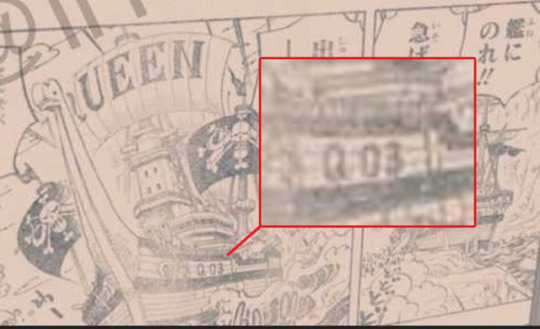
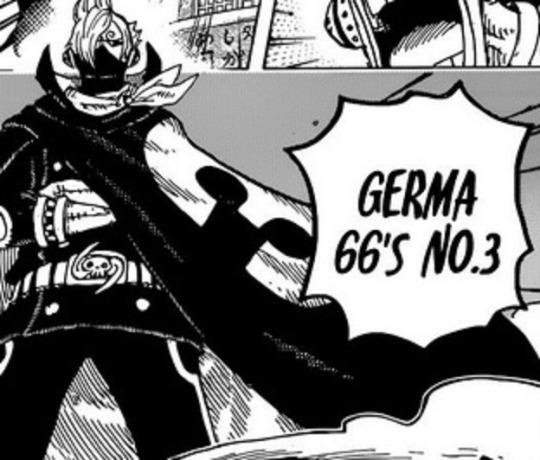
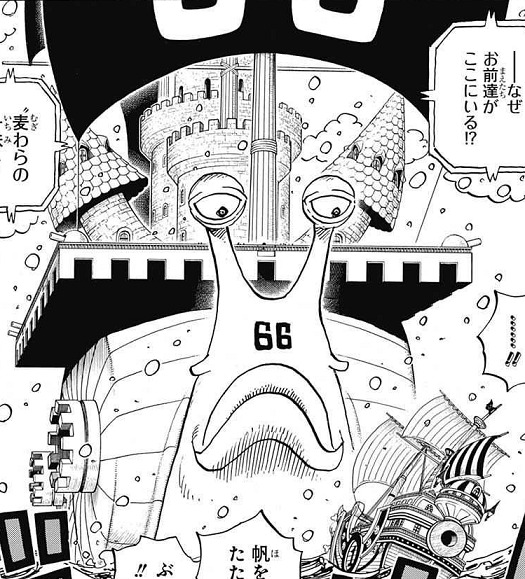
Also important to note, Sanji’s Hell Memories was fueled by remembering the torture he has gone through within the last two years and Queen is not only likely a Okama, also a cruel guy which is responsible for breaking the spirits of the prisoners. It’s the perfect opportunity to push Sanji to his limits…

I like to add that when Sanji was fighting with Judge and thought about their past, his Dj(Poele A Frire) glowed brighter than than usual.
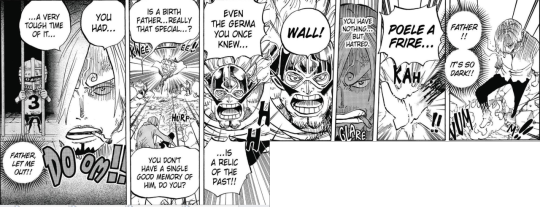
against judge

Diable Jambe and Poele A Frire against Doflamingo:
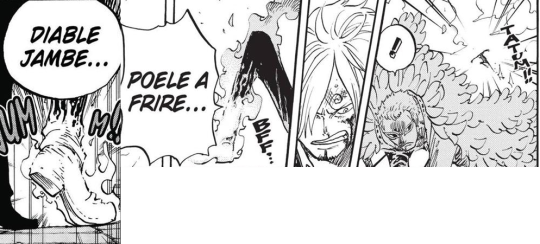
also on queen being an okama
The word “okama” generally refers to homosexual men, trans women or heterosexual men who are considered feminine or flamboyant (similar to “onee” or “new half”).
so queen would be an okama though he has shown attraction to women due to his feminine traits and “ having all of the mannerisms of an okama, “
and there is a bit of a pun with queen I mean he is a massive man named Queen with make up and okama mannerism who can transform into a creature classified as a Dragon( his brachiosaurus fruit is classified under the Ryu Ryu (Dragon-Dragon) Fruit family therefore making the dinosaur he turns into being classified as a dragon subspecies. This is so as the Japanese word for dinosaur, Kyoryu, is written with the characters for “Fearful” and “Dragon”.). In other words, Drag Queen.
– Queen’s appearance is based on the character “Heart” from “Fist of the North Star”. in Kenshiro vs Heart, how Kenshiro defeated him with “SUPER KICKS”.
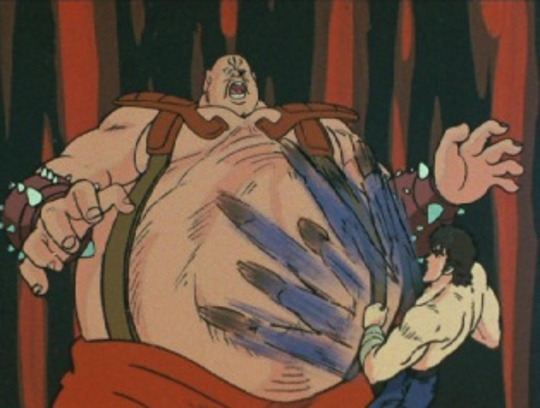
In it Kamen Rider Black RX is a cyborg whose motif is a black grasshopper, which mirrors Sanji’s own epithet as Black Leg. Grasshoppers are known for their incredible spring like leg muscles that allow them to jump incredible heights which allow them to launch themselves in the air to fly. However he also has another motif and that is based on the sun. Kamen Rider Black RX is a photosynthetic warrior who is powered by the sun.
– Queen showed interest in Sanji because he’s a Vinsmoke and Judge’s son. That’s the first build-up of this upcoming fight.
– Queen knows Judge. And based on Queen’s evil medical and engineering expertise, he was definitely a previous member of Vegapunk’s scientific team (Queen, Ceasar, Judge, Vegapunk). This is a build-up for a flashback.
– Queen can extend his neck like Yonji’s right forearm. It’s the same design and both act as a winch. He can also shoot bullets from his mouth and use poison. , I expect Queen to have all Germa’s tech in him. And by defeating him, it would seem as if Sanji defeated or overcame his siblings.
Since Kamen Rider is powered by the sun, he can set his legs and fists on fire to increase the lethality of his kicks and punches, which is basically what Sanji’s Diable Jambe does

and he hada form called the prince of anger where once he reaches a certain point of anger he transformed and
this would be foreshadowing
so either sanji will get pissed off enough that he uses the raid suit

so he will either havea physical transformationthere’s a tokusatsu that we know Oda likes, which would be a much more explicit inspiration for the Germa 66 : Kamen Rider. specifically the villainous organization shocker
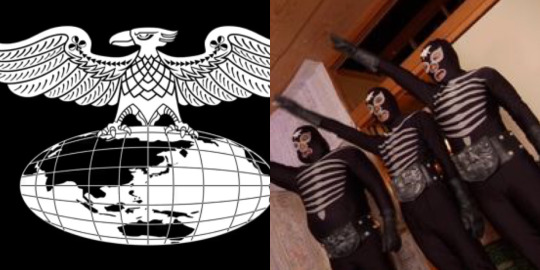
Shocker was a terrorist organization that planned on ruling the world (in the original manga is shown that Shocker had some influences over the governments of the world), with virtually all of its members modified in some way. The founders had mostly Nazi ties
so it fits that germa66 not only references the nazis but the shocker organization from kamen rider
Shocker’s scientists performed surgical alterations that gave the subject superhuman fighting abilities. Even the most basic Shocker soldier was tougher, stronger and faster than the average human civilian. The most powerful of their forces were the Kaijin, modified humans who were combined with animal DNA and human cybernetics to create living weapons.
In an attempt to create the ultimate warriors, they were responsible for the rise of the very first Kamen Riders 1 and 2, whom defected and became the heroes who would ultimately lead to the fall of Shocker.
and sanji and his siblings were altered genetically
and the kamen riders specialty is the kamen rider KICK
both sanjis experience as a child and duval was a reference to the man in the iron mask .
Though based on a real prisoner in the late 1600’s who Louis XIV forced to always wear a velvet mask to hide his identity and who was made to serve other prisoners, one of the most popular versions of the story is that of Alexandre Dumas, translated into a film in 1998. The prisoner, now shown wearing an iron mask, was Louis XIV’s twin brother
sanji had encountered the same fate as written in Alexandre DUMAS book (The Vicomte of Bragelonne: Ten Years Later). Declared dead for the country but condemned to wear a mask and to spend all his life in an horrible prison
and louis XIV was known as the sun king and kamen rider black rx is solar powered

and sanjis and zoros rivalry parallels inuarashi and nekomamushis rivalry ( and inuarashi is called the ruler of the day and has a group under him that reference the three musketeers by alexander dumas (a french story ) and sanji was dressed up as a musketeer and oda said in an sbs that sanji in the real world would be french
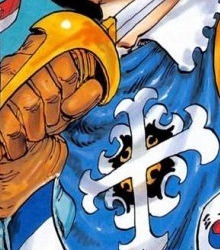
porche-chan . tumblr . com/post/134501849916/weve-located-zoros-fashion-twinkie-everyone
porche-chan . tumblr . com/post/138118772526/i-made-an-observation-a-while-back-about#notes
porche-chan . tumblr . com/post…is-an-imposing-figure?is_related_post=1#notes
both nekomamushi and inuarashi (zoro and sanjis counterparts) losing the precise limb that could incapacitate zoro and sanjis respective fighting styles
about inuarashis similarities to sanji I have to point out that inuarashi has a group that operates under his command called the
Inuarashi Musketeer Squad Among them are three minks known as the “Three Inuarashi Musketeers”,
The name of the squad is a reference to the novel The Three Musketeers by Alexandre Dumas.
a french story and oda stated in an sbs that sanji would be french in the real world
#one piece#one piece theory#op theory#op theories#op sanji#one piece sanji#kuroashi sanji#sanji kuroashi#blackleg sanji#sanji blackleg
11 notes
·
View notes
Text
Alexandre Dumas







Alexandre Dumas (English /duːmˈɑː, djuː-/, French: [alɛksɑ̃dʁ dyma], born Dumas Davy de la Pailleterie [dyma davi də la pajətʁi]; 24 July 1802 – 5 December 1870), also known as Alexandre Dumas, père, was a French writer. His works have been translated into nearly 100 languages, and he is one of the most widely read French authors. Many of his historical novels of high adventure were originally published as serials, including The Count of Monte Cristo, The Three Musketeers, Twenty Years After, and The Vicomte de Bragelonne: Ten Years Later. His novels have been adapted since the early twentieth century for nearly 200 films. Dumas' last novel, The Knight of Sainte-Hermine, unfinished at his death, was completed by a scholar and published in 2005, becoming a bestseller. It was published in English in 2008 as The Last Cavalier.
Prolific in several genres, Dumas began his career by writing plays, which were successfully produced from the first. He also wrote numerous magazine articles and travel books; his published works totaled 100,000 pages. In the 1840s, Dumas founded the Théâtre Historique in Paris.
Dumas' father, General Thomas-Alexandre Davy de la Pailleterie, was born in the French colony of Saint-Domingue (present-day Haiti) to a French nobleman and an enslaved African woman. At age 14 Thomas-Alexandre was taken by his father to France, where he was educated in a military academy and entered the military for what became an illustrious career.
His father's aristocratic rank helped young Alexandre acquire work with Louis-Philippe, Duke of Orléans. He later began working as a writer, finding early success. Decades later, in the election of Louis-Napoléon Bonaparte in 1851, Dumas fell from favor and left France for Belgium, where he stayed for several years. Upon leaving Belgium, Dumas moved to Russia for a few years before going to Italy. In 1861 he founded and published the newspaper L' Indipendente, which supported the Italian unification effort. In 1864 he returned to Paris.
Though married, in the tradition of Frenchmen of higher social class, Dumas had numerous affairs (allegedly as many as forty). In his lifetime, he was known to have at least four illegitimate or "natural" children; although twentieth-century scholars found that Dumas fathered another three "natural" children. He acknowledged, and assisted his son, Alexandre Dumas to become a successful novelist, and playwright. They are known as Alexandre Dumas père (father) and Alexandre Dumas fils (son). Among his affairs, in 1866 Dumas had one with Adah Isaacs Menken, an American actress then less than half his age and at the height of her career.
The English playwright Watts Phillips, who knew Dumas in his later life, described him as "the most generous, large-hearted being in the world. He also was the most delightfully amusing and egotistical creature on the face of the earth. His tongue was like a windmill – once set in motion, you never knew when he would stop, especially if the theme was himself."
Early life
Dumas Davy de la Pailleterie (later known as Alexandre Dumas) was born in 1802 in Villers-Cotterêts in the department of Aisne, in Picardy, France. He had two older sisters, Marie-Alexandrine (born 1794) and Louise-Alexandrine (born 1796, died 1797). Their parents were Marie-Louise Élisabeth Labouret, the daughter of an innkeeper, and Thomas-Alexandre Dumas. Thomas-Alexandre had been born in the French colony of Saint-Domingue (now Haiti), the mixed-race, natural son of the marquis Alexandre Antoine Davy de la Pailleterie, a French nobleman and général commissaire in the artillery of the colony, and Marie-Cessette Dumas, a slave of Afro-Caribbean ancestry. It is not known whether she was born in Saint-Domingue or in Africa (although the fact that she had a French surname probably means that she was Creole), nor is it known from which African people her ancestors came.
Brought as a boy to France by his father and legally freed there, Thomas-Alexandre Dumas Davy was educated in a military school and joined the army as a young man. As an adult, Thomas-Alexandre used his mother's name, Dumas, as his surname after a break with his father. Dumas was promoted to general by the age of 31, the first soldier of Afro-Antilles origin to reach that rank in the French army. He served with distinction in the French Revolutionary Wars. He became general-in-chief of the Army of the Pyrenees, the first man of color to reach that rank. Although a general under Bonaparte in the Italian and Egyptian campaigns, Dumas had fallen out of favor by 1800 and requested leave to return to France. On his return, his ship had to put in at Taranto in the Kingdom of Naples, where he and others were held as prisoners of war. During his two-year imprisonment, his health was ruined. At the time of Alexandre's birth, his father was impoverished.
His father died of cancer in 1806 when Alexandre was four. His widowed mother Marie-Louise could not provide her son with much of an education, but Dumas read everything he could and taught himself Spanish. His mother's stories of Thomas-Alexandre's bravery during the campaigns of the Revolutionary Wars inspired the boy's vivid imagination. Although poor, the family had their father's distinguished reputation and aristocratic rank to aid the children's advancement. In 1822, after the restoration of the monarchy, the 20-year-old Alexandre Dumas moved to Paris. He acquired a position at the Palais Royal in the office of Louis-Philippe, Duke of Orléans.
Career
While working for Louis-Philippe, Dumas began writing articles for magazines and plays for the theatre. As an adult, he used his slave grandmother's surname of Dumas, as his father had done as an adult. His first play, Henry III and His Courts, produced in 1829 when he was 27 years old, met with acclaim. The next year his second play, Christine, was equally popular. These successes gave him sufficient income to write full-time. The modern style of Charles Baudelaire inspired Dumas to create a symbolist style of poetry in France.
In 1830 Dumas participated in the Revolution that ousted Charles X and replaced him with Dumas' former employer, the Duke of Orléans, who ruled as Louis-Philippe, the Citizen King. Until the mid-1830s, life in France remained unsettled, with sporadic riots by disgruntled Republicans and impoverished urban workers seeking change. As life slowly returned to normal, the nation began to industrialize. An improving economy combined with the end of press censorship made the times rewarding for Alexandre Dumas' literary skills.
After writing additional successful plays, Dumas switched to writing novels. Although attracted to an extravagant lifestyle and always spending more than he earned, Dumas proved to be an astute marketer. As newspapers were publishing many serial novels, in 1838 Dumas rewrote one of his plays as his first serial novel, Le Capitaine Paul. He founded a production studio, staffed with writers who turned out hundreds of stories, all subject to his personal direction, editing, and additions.
From 1839 to 1841 Dumas, with the assistance of several friends, compiled Celebrated Crimes, an eight-volume collection of essays on famous criminals and crimes from European history. He featured Beatrice Cenci, Martin Guerre, Cesare and Lucrezia Borgia, as well as more recent events and criminals, including the cases of the alleged murderers Karl Ludwig Sand and Antoine François Desrues, who were executed.
Dumas collaborated with Augustin Grisier, his fencing master, in his 1840 novel, The Fencing Master. The story is written as Grisier's account of how he came to witness the events of the Decembrist revolt in Russia. The novel was eventually banned in Russia by Czar Nicholas I, and Dumas was prohibited from visiting the country until after the Czar's death. Dumas refers to Grisier with great respect in The Count of Monte Cristo, The Corsican Brothers, and in his memoirs.
Dumas depended on numerous assistants and collaborators, of whom Auguste Maquet was the best known. It was not until the late twentieth century that his role was fully understood. Maquet is known to have outlined the plot of The Count of Monte Cristo and made substantial contributions to The Three Musketeers and its sequels, as well as to several of Dumas' other novels. Their method of working together was for Maquet to propose plots and write drafts, while Dumas added the details, dialogues, and the final chapters. Dumas wrote the short novel Georges (1843), which uses ideas and plots later repeated in The Count of Monte Cristo. Maquet took Dumas to court to try to get authorial recognition and a higher rate of payment for his work. He was successful in getting more money, but not a byline.
Dumas' novels were so popular that they were soon translated into English and other languages. His writing earned him a great deal of money, but he was frequently insolvent, as he spent lavishly on women and sumptuous living. (Scholars have found that he had a total of 40 mistresses.) In 1846 he had built a country house outside Paris at Le Port-Marly, the large Château de Monte-Cristo, with an additional building for his writing studio. It was often filled with strangers and acquaintances who stayed for lengthy visits and took advantage of his generosity. Two years later, faced with financial difficulties, he sold the entire property.
Dumas wrote in a wide variety of genres and published a total of 100,000 pages in his lifetime. He also made use of his experience, writing travel books after taking journeys, including those motivated by reasons other than pleasure. After King Louis-Philippe was ousted in a revolt, Louis-Napoléon Bonaparte was elected president. As Bonaparte disapproved of the author, Dumas fled in 1851 to Brussels, Belgium, which was also an effort to escape his creditors. About 1859 he moved to Russia, where French was the second language of the elite and his writings were enormously popular. Dumas spent two years in Russia before leaving to seek different adventures. He published travel books about Russia.
In March 1861 the kingdom of Italy was proclaimed, with Victor Emmanuel II as its king. Dumas traveled there and for the next three years participated in the movement for Italian unification. He founded and led a newspaper, Indipendente. Returning to Paris in 1864, he published travel books about Italy.
Despite Dumas' aristocratic background and personal success, he had to deal with discrimination related to his mixed-race ancestry. In 1843 he wrote a short novel, Georges, that addressed some of the issues of race and the effects of colonialism. His response to a man who insulted him about his African ancestry has become famous. Dumas said:
My father was a mulatto, my grandfather was a Negro, and my great-grandfather a monkey. You see, Sir, my family starts where yours ends.
Personal life
On 1 February 1840, Dumas married actress Ida Ferrier (born Marguerite-Joséphine Ferrand) (1811–1859). He had numerous liaisons with other women and was known to have fathered at least four children by them:
Alexandre Dumas, fils (1824–1895), son of Marie-Laure-Catherine Labay (1794–1868), a dressmaker. He became a successful novelist and playwright.
Marie-Alexandrine Dumas (5 March 1831 – 1878), the daughter of Belle Krelsamer (1803–1875).
Micaëlla-Clélie-Josepha-Élisabeth Cordier (born 1860), the daughter of Emélie Cordier.
Henry Bauer, the son of a woman whose surname was Bauer.
About 1866, Dumas had an affair with Adah Isaacs Menken, a well-known American actress. She had performed her sensational role in Mazeppa in London. In Paris she had a sold-out run of Les Pirates de la Savanne and was at the peak of her success.
These women were among Dumas' nearly 40 mistresses found by scholar Claude Schopp, in addition to three natural children. Schopp has been researching Dumas for decades, primarily his writings.
Death and legacy
At his death in December 1870, Dumas was buried at his birthplace of Villers-Cotterêts in the department of Aisne. His death was overshadowed by the Franco-Prussian War. Changing literary fashions decreased his popularity. In the late twentieth century, scholars such as Reginald Hamel and Claude Schopp have caused a critical reappraisal and new appreciation of his art, as well as finding lost works.
In 1970, the Alexandre Dumas Paris Métro station was named in his honour. His country home outside Paris, the Château de Monte-Cristo, has been restored and is open to the public as a museum.
Researchers have continued to find Dumas works in archives, including the five-act play, The Gold Thieves, found in 2002 by the scholar Réginald Hamel in the Bibliothèque Nationale de France. It was published in France in 2004 by Honoré-Champion.
Frank Wild Reed (1874–1953), the older brother of Dunedin publisher A. H. Reed, was a busy Whangarei pharmacist who never visited France, yet he amassed the greatest collection of books and manuscripts relating to Dumas outside France. It contains about 3350 volumes, including some 2000 sheets in Dumas' handwriting and dozens of French, Belgian and English first editions. This collection was donated to Auckland Libraries after his death. Reed wrote the most comprehensive bibliography of Dumas.
In 2002 for the bicentennial of Dumas' birth, French President Jacques Chirac had a ceremony honoring the author by having his ashes reinterred at the mausoleum of the Panthéon of Paris, where many French luminaries were buried. The proceedings were televised: the new coffin was draped in a blue velvet cloth and carried on a caisson flanked by four mounted Republican Guards costumed as the four Musketeers. It was transported through Paris to the Panthéon. In his speech, President Chirac said:
"With you, we were D'Artagnan, Monte Cristo, or Balsamo, riding along the roads of France, touring battlefields, visiting palaces and castles—with you, we dream."
Chirac acknowledged the racism that had existed in France and said that the reinterment in the Pantheon had been a way of correcting that wrong, as Alexandre Dumas was enshrined alongside fellow great authors Victor Hugo and Émile Zola. Chirac noted that although France has produced many great writers, none has been so widely read as Dumas. His novels have been translated into nearly 100 languages. In addition, they have inspired more than 200 motion pictures.
In June 2005 Dumas' last novel, The Knight of Sainte-Hermine, was published in France featuring the Battle of Trafalgar. Dumas described a fictional character killing Lord Nelson (Nelson was shot and killed by an unknown sniper). Writing and publishing the novel serially in 1869, Dumas had nearly finished it before his death. It was the third part of the Sainte-Hermine trilogy.
Claude Schopp, a Dumas scholar, noticed a letter in an archive in 1990 that led him to discover the unfinished work. It took him years to research it, edit the completed portions, and decide how to treat the unfinished part. Schopp finally wrote the final two-and-a half chapters, based on the author's notes, to complete the story. Published by Editions Phébus, it sold 60,000 copies, making it a bestseller. Translated into English, it was released in 2006 as The Last Cavalier, and has been translated into other languages.
Schopp has since found additional material related to the Saints-Hermine saga. Schopp combined them to publish the sequel Le Salut de l'Empire in 2008.
Works
Fiction
Alexandre Dumas wrote numerous stories and historical chronicles of high adventure. They included the following:
Captain Paul (Le Capitaine Paul, 1838), his first serial novel.
Acté of Corinth; or, The convert of St. Paul. a tale of Greece and Rome. (1839), a novel about Rome, Nero, and the early Christianity.
Othon l'archer (1840)
Captain Pamphile (Le Capitaine Pamphile, 1839)
The Fencing Master (Le Maître d'armes, 1840)
Castle Eppstein; The Specter Mother (Chateau d'Eppstein; Albine, 1843)
Georges (1843): The protagonist of this novel is a man of mixed race, a rare allusion to Dumas' own African ancestry.
The Conspirators (Le chevalier d'Harmental, 1843) later adapted by Paul Ferrier into an opera.
The Regent's Daughter (Une Fille du régent, 1845). Sequel to the Conspirators.
Louis XIV and His Century (Louis XIV et son siècle, 1844)
The Nutcracker (Histoire d'un casse-noisette, 1844): a revision of Hoffmann's story The Nutcracker and the Mouse King, later set by composer Pyotr Ilyich Tchaikovsky to music for a ballet also called The Nutcracker.
The D'Artagnan Romances:
The Corsican Brothers (Les Frères Corses, 1844)
The Count of Monte Cristo (Le Comte de Monte-Cristo, 1845–1846)
The Three Musketeers (Les Trois Mousquetaires, 1844)
Twenty Years After (Vingt ans après, 1845)
The Vicomte de Bragelonne, sometimes called "Ten Years Later", (Le Vicomte de Bragelonne, ou Dix ans plus tard, 1847): When published in English, it was usually split into three parts: The Vicomte de Bragelonne, Louise de la Valliere, and The Man in the Iron Mask, of which the last part is the best known. (A third sequel, The Son of Porthos, 1883 (a.k.a. The Death of Aramis) was published under the name of Alexandre Dumas; however, the real author was Paul Mahalin.)
The Valois romances: The Valois were the royal house of France from 1328 to 1589, so, many of Dumas romances cover their Reign. Traditionally, the so-called "Valois Romances" are the three that portrait the Reign of Queen Marguerite, the last of the Valois.
La Reine Margot, also published as Marguerite de Valois (1845)
La Dame de Monsoreau (1846) (later adapted as a short story titled, Chicot the Jester)
The Forty-Five Guardsmen (1847) (Les Quarante-cinq)
However, there are four more novels that cover this family, and portrait similar characters, starting with François or Francis I, his son Henry II, and Marguerite and François II, sons of Henry II and Catherine De Médici.
Ascanio (novel) (1843); Written in collaboration with Paul Meurice (1820–1905). Is a Romance of Francis I (1515–1547), but the main character is Italian artist Benvenuto Cellini. Ascanio (opera) was based on this novel.
The Two Dianas (Les Deux Diane, 1846), is a novel about Gabriel, comte de Montgomery, who mortally wounded king Henry II; and was lover to his daughter, Diana de Castro.
The Page of the Duke of Savoy, (1855) is a sequel to the Two Dianas (1846), and it covers the struggle for supremacy between the Guises and Catherine de Médicis, the Florentine mother of the last three Valois Kings of France (and wife of Henry II). The main character in this novel is Emmanuel Philibert, Duke of Savoy.
The Horoscope: a romance of the reign of François II (1858), covers François II, who reigned one year (1559–1560) and died at the age of 16.
The Marie Antoinette romances (8 novels):
Joseph Balsamo (Mémoires d'un médecin: Joseph Balsamo, 1846–1848) (a.k.a. Memoirs of a Physician, Cagliostro, Madame Dubarry, The Countess Dubarry, or The Elixir of Life)(Joseph Balsamo is about 1000 pages long, and is usually published in two volumes in English translations: Vol 1. Joseph Balsamo and Vol 2. Memoirs of a Physician.) The long unabridged version includes the contents of book two, Andrée de Taverney; the short abridged versions usually are divided in "Balsamo" and "Andrée de Taverney" as completely different books.
Andrée de Taverney, or The Mesmerist's Victim
The Queen's Necklace (Le Collier de la Reine, 1849–1850)
Ange Pitou (1853) (a.k.a. Storming the Bastille or Six Years Later). From this book there are also long unabridged versions which include the contents of book five; but there are many short versions that treat "The Hero of the People" as a separated volume.
The Hero of the People
The Royal Life Guard or The Flight of the Royal Family.
The Countess de Charny (La Comtesse de Charny, 1853–1855). Same situation as with the other books, there are long unabridged versions which include the contents of book six; but many short versions that leave contents in "The Royal Life Guard" as a separated volume.
Le Chevalier de Maison-Rouge (1845) (a.k.a. The Knight of the Red House, or The Knight of Maison-Rouge)
To read the Marie Antoinette Romances, then, it is important is to find out which versions you have. If you have access only to the unabridged versions (normally 100 chapters or more), then there are only five books (1,3,4,7 and 8). However, most common are the short versions (50 chapters or less). In this case, you need to find all 8 books.
Amaury (1843)
The Black Tulip (La Tulipe noire, 1850)
Olympe de Cleves (Olympe de Cleves, 1851-2)
Catherine Blum, 1853-4)
The Mohicans of Paris (Les Mohicans de Paris, 1854)
The Wolf-Leader (Le Meneur de loups, 1857). One of the first Werewolf novels ever written.
The Last Vendee, or The She Wolves of Machecoul (Les louves de Machecoul, 1859). A romance (not about werewolves).
The Sainte-Hermine trilogy:
The Companions of Jehu (Les Compagnons de Jehu, 1857)
The Whites and the Blues (Les Blancs et les Bleus, 1867)
The Knight of Sainte-Hermine (Le Chevalier de Sainte-Hermine, 1869): This nearly completed novel was his last major work; it was being published serially. It was lost until a rediscovery in 1990 by the Dumas scholar Claude Schopp. He edited it and wrote two-and-a-half chapters to complete it, based on the notes of Dumas. Published in 2005 in France, it quickly became a bestseller.
La Sanfelice (1864), set in Naples in 1800
Pietro Monaco sua moglie Maria Oliverio e i loro complici, 1864)
Robin Hood (Robin Hood le proscrit, 1863)
The Count of Moret; The Red Sphinx; or, Richelieu and his rivals (Le Comte de Moret; Le Sphinx Rouge, 1865–1866)
The Women's War (La Guerre des Femmes): follows Baron des Canolles, a naïve Gascon soldier who falls in love with two women.
Drama
Although best known now as a novelist, Dumas first earned fame as a dramatist. His Henri III et sa cour (1829) was the first of the great Romantic historical dramas produced on the Paris stage, preceding Victor Hugo's more famous Hernani (1830). Produced at the Comédie-Française and starring the famous Mademoiselle Mars, Dumas' play was an enormous success and launched him on his career. It had fifty performances over the next year, extraordinary at the time.
Other hits followed.
Antony (1831)-—a drama with a contemporary Byronic hero-—is considered the first non-historical Romantic drama. It starred Mars' great rival Marie Dorval.
Charles VII at the Homes of His Great Vassals (Charles VII chez ses grands vassaux, 1831). This drama was adapted by the Russian composer César Cui for his opera The Saracen.
La Tour de Nesle (1832), an historical melodrama
Kean (1836), based on the life of the notable late English actor Edmund Kean. The great French actor Frédérick Lemaître played him in the production.
The Gold Thieves (after 1857): an unpublished five-act play. It was discovered in 2002 by the Canadian scholar Reginald Hamel, who was researching in the Bibliothèque Nationale de France. The play was published in France in 2004 by Honoré-Champion. Hamel said that Dumas was inspired by a novel written in 1857 by his mistress Célèste de Mogador.
Dumas wrote many plays and adapted several of his novels as dramas. In the 1840s he founded the Théâtre Historique, located on the Boulevard du Temple in Paris. The building was used after 1851 by the Opéra National (established by Adolphe Adam in 1847). It was renamed the Théâtre Lyrique in 1851.
Nonfiction
Dumas was a prolific writer of nonfiction. He wrote journal articles on politics and culture and books on French history.
His lengthy Grand Dictionnaire de cuisine (Great Dictionary of Cuisine) was published posthumously in 1873. A combination of encyclopedia and cookbook, it reflects Dumas' interests as both a gourmet and an expert cook. An abridged version (the Petit Dictionnaire de cuisine, or Small Dictionary of Cuisine) was published in 1882.
He was also known for his travel writing. These books included:
Impressions de voyage: En Suisse (Travel Impressions: In Switzerland, 1834)
Une Année à Florence (A Year in Florence, 1841)
De Paris à Cadix (From Paris to Cadiz, 1847)
The New Troy (Montevideo, ou une nouvelle Troie, 1850), inspired by the Great Siege of Montevideo
Le Journal de Madame Giovanni (The Journal of Madame Giovanni, 1856)
Travel Impressions in the Kingdom of Napoli/Naples Trilogy:
Impressions of Travel in Sicily (Le Speronare (Sicily – 1835), 1842
Captain Arena (Le Capitaine Arena (Italy – Aeolian Islands and Calabria – 1835), 1842
Impressions of Travel in Naples (Le Corricolo (Rome – Naples – 1835), 1843
Travel Impressions in Russia – Le Caucase Original edition: Paris 1859
Adventures in Czarist Russia, or From Paris to Astrakhan (Impressions de voyage: En Russie; De Paris à Astrakan: Nouvelles impressions de voyage (1858), 1859–1862
Voyage to the Caucasus (Le Caucase : Impressions de voyage; suite de En Russie (1859), 1858–1859
Wikipedia
5 notes
·
View notes